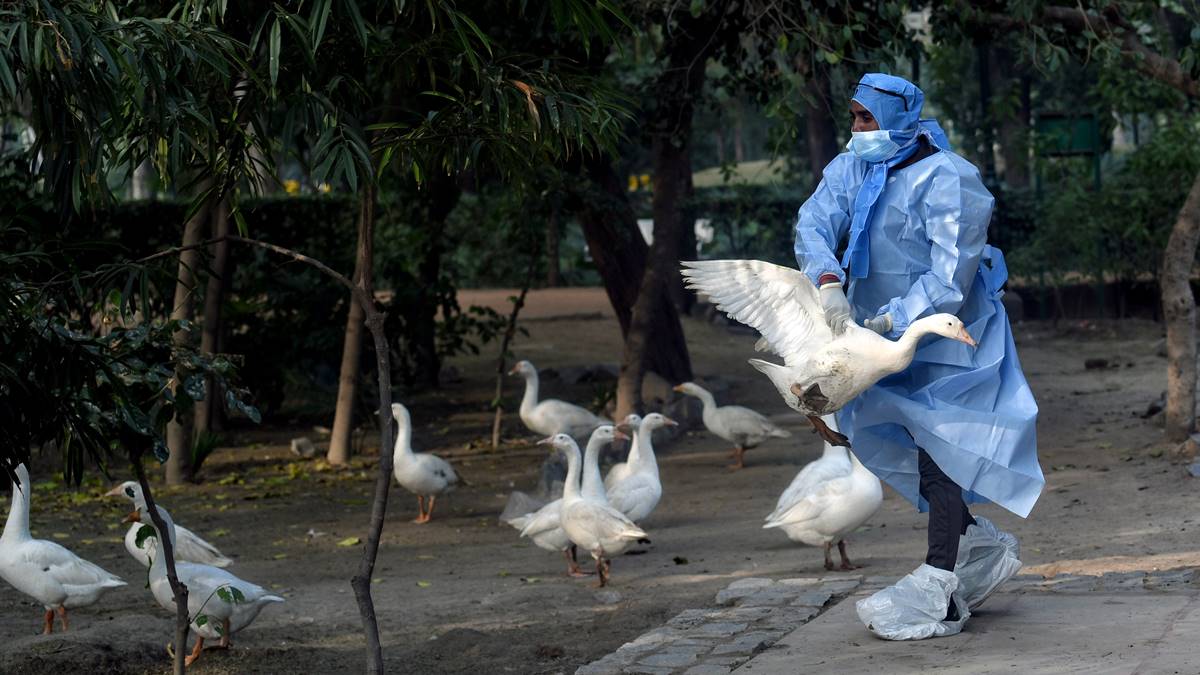The outbreak of the Covid-19 pandemic has confirmed that the health of human, animals and environment are intertwined. Now it becomes important to understand whether the threat of diseases emerging and spreading rapidly at the human-animal-environment interface has been averted after this pandemic.
Abraham Ouseph is an experienced duck farmer living in Ward 1 of Edathua Gram Panchayat in the Alappuzha district of Kerala. In April this year, when ducks started dying one by one on his farm, he informed the Animal Husbandry Department (AHD). The investigation confirmed bird flu (Avian Influenza, H5N1). The remaining ducks were culled by the Rapid Response Teams of AHD. Ouseph lost his entire flock of 7,500 ducks due to the bird flu outbreak. As a result, the farmer, who had raised ducks by taking loans, suffered a financial loss of lakhs. Now, it is difficult for Ouseph to consider returning to duck farming soon.
In the same month, ducks in Cheruthana village in the Alappuzha district of Kerala were also found infected with the Avian Influenza virus. The news caused panic in the surrounding areas. Instructions were issued to stop and turn back vehicles carrying poultry meat, eggs and ducks, and thousands of birds were culled. According to the Government of India’s Avian Influenza Action Plan, it is crucial to destroy all domestic birds within a one-kilometer radius of the affected area (epicenter).
Rising Cases Of Infectious Diseases
Repeated outbreaks of bird flu have adversely affected several Kerala families whose livelihood largely depends on duck farming. Experts say that as it severely impacts the economic condition of farmers and poses a threat to human health, the outbreak of avian influenza should be handled with due importance and in a timely manner.
Apart from Kerala, bird flu has also affected Andhra Pradesh, Maharashtra and Jharkhand this year. Other infectious disease outbreaks have also been reported in many different regions of our country, such as Kyasanur forest disease in the Western Ghats, West Nile Fever in Kerala and Swine Flu in Assam.
According to the Centers for Disease Control and Prevention, US, about 60 per cent of known infectious diseases in humans and about 75 per cent of all emerging infectious diseases are caused by pathogens that originate in animals.
Measures Needed To Control Infectious Diseases
The outbreaks of these infectious diseases emerging at the human-animal-environment interface across the world almost every year have clearly demonstrated that new highly infectious agents try to spread rapidly in the environment when they get the opportunity and can assume a monstrous form if not controlled in time. In such a situation, the question arises of how these diseases can be prevented or controlled in time. As a solution, there appears to be a need to implement coordinated efforts at various levels. The concept of One Health has emerged out of this need, and its application is being developed at the national and international levels.
One Health is an integrated and holistic approach that recognises that human health, animal health and the health of the environment around us (shared environment) are closely linked, with human health being highly dependent on the health of the other two.
To tackle health threats to humans, animals, and the environment and to balance health in a sustainable manner, there is a need for collaboration at various levels, across sectors, and disciplines, to implement the concept of One Health on the ground.
This is why international organisations such as the World Health Organization (WHO), Food and Agriculture Organization (FAO) of the United Nations, and the World Organization for Animal Health (OIE/WOAH) have strongly advocated for this concept.
Cause Behind Growing Disease Outbreaks
Increasing exploitation of natural resources, rapid expansion of agricultural activity, international trade, urbanisation, and increased use of antibiotics are negatively impacting the health of the environment and the species living in it, including humans. To mitigate the negative impacts of these man-made activities, there is a need to establish a long-term approach that can provide solutions built on environmentally friendly development activities.
Forest fringe areas where human settlements meet forests are particularly vulnerable to disease transmission that emerges at the interface between wildlife, livestock, and humans. Inadequate health infrastructure and lack of awareness about diseases make the situation even more complex for rural households vulnerable to external shocks. Diseases spreading among livestock and wild animals pose a serious threat to the local community.
(The writer is Associate Coordinator- One Health at the World Wide Fund for Nature – India.)

Rohit Malhotra is a medical expert and health journalist who offers evidence-based advice on fitness, nutrition, and mental well-being. His articles aim to help readers lead healthier lives.


